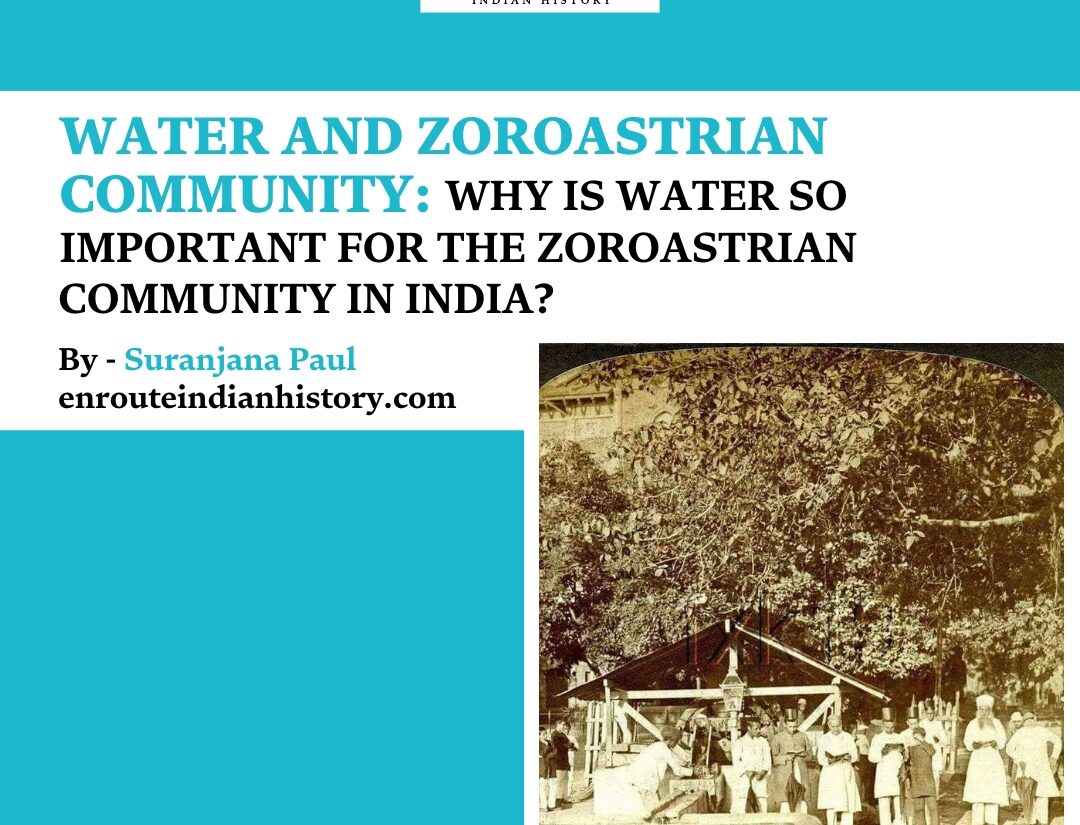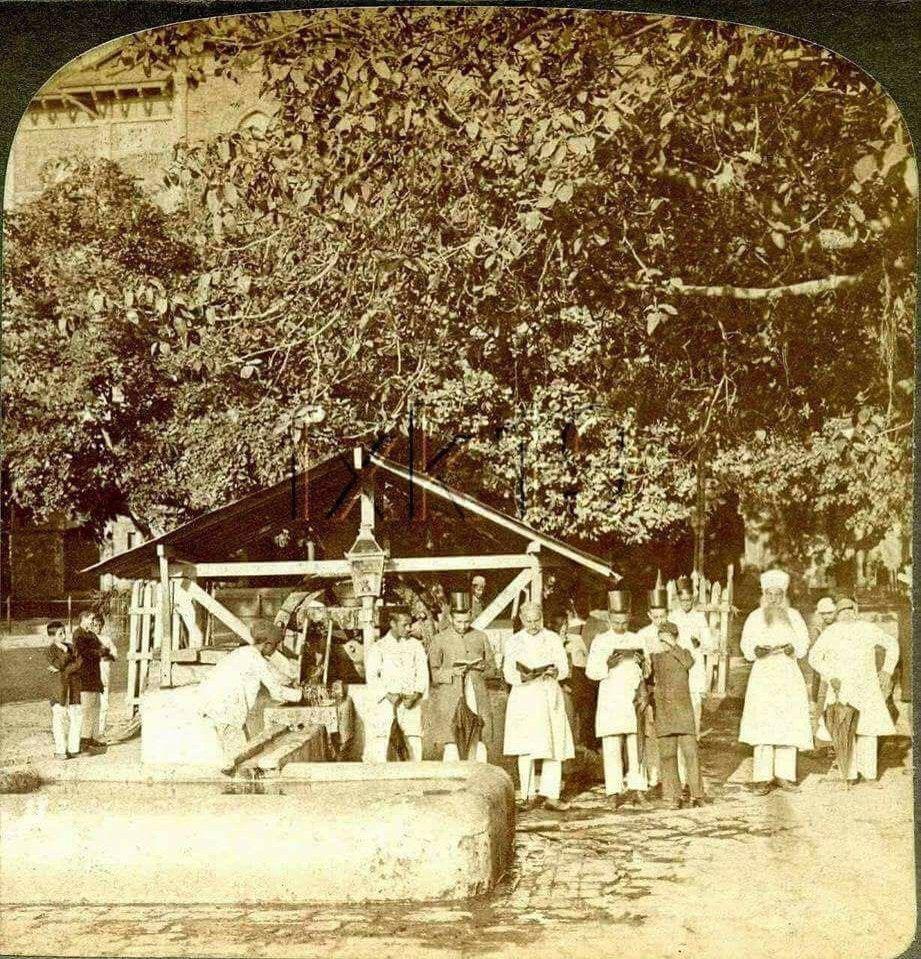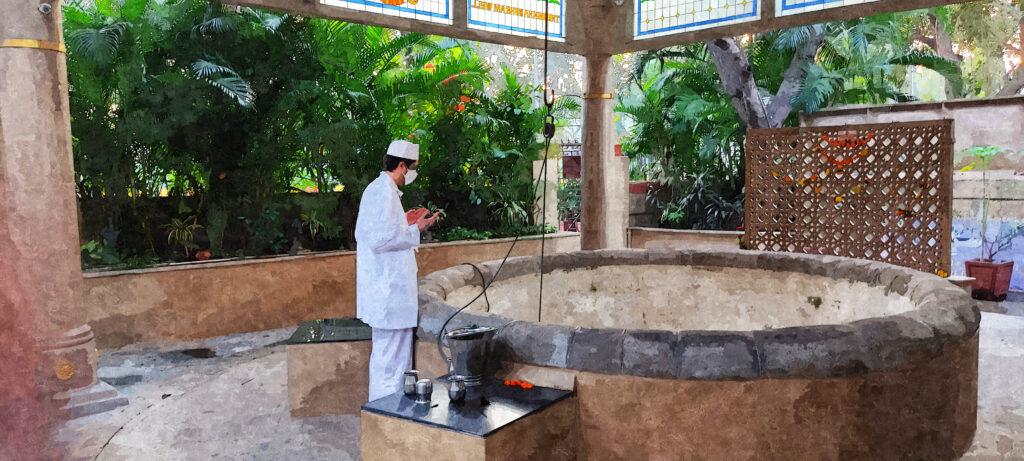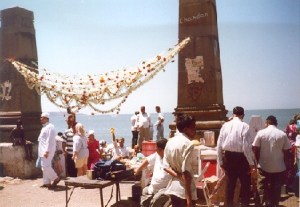Water and Zoroastrian Community: Why Is Water So Important For The Zoroastrian Community In India?
- EIH User
- August 21, 2024

Let’s start with the question, who is the Zoroastrian community in India? According to some different sources Parsis and Irani communities are popularly known as Zoroastrian communities in India. After being defeated by Arab Muslims, a few Zoroastrians fled to India by ship and many of them were from the Iranian Pars region and later they became known as ‘Parsis’. They primarily arrived at Sanjan, in the Gujarat region in the Indian Subcontinent. Thereby, two separated communities of Zoroastrians began to grow simultaneously, one is Parsis and another is Iranians. Whereas, Iranians immigrated more recently than Parsis to India. Zoroastrians are a minority community in India. According to the 2011 census record, there are 57,264 Parsis Zoroastrians in India. Their settlement is mostly found in the western part of India, especially in Mumbai.
Role of water in Zoroastrian religion
In the Zoroastrian tradition along with fire, water also has a prominent role in their religious practice. Even, in ancient times Iranians considered the tiniest spring or droplet as a symbol of the entire creation of water. For them, water is an agent of ritual purity. They made significant efforts to prevent pollution of the water by using elaborate rituals. In the Old Avestan Gathas, water was mentioned along with the plants as the creation of Ahura Mazda. According to Zoroaster, Ahura Mazda is the only god whom people should revere and worship. They worship the water because they offer up their prayers in front of the water of the well, river, and sea.

(Source: Parsi Times)
Zoroastrian community water traditions in India:
The significance of water is Parsi culture reflected through the presence of water wells in the fire temples. No one can think of the fire temple without the water well in the compound of the temple. In India, there are one hundred fire temples including eight cathedral fire temples. Interestingly, there are 44 fire temples in Mumbai and four of them are cathedral fire temples. Zoroastrian people worship and value both elements, fire and water.

Parsis offering prayers at the Bhikha Behram Well, late 19th century.
(Source: Architecture and Design)
For them, water is considered sacred and a result of the protection of good creations. The water well in the complex of fire temples is as sacred as the holy fire which is installed inside the temple. Wells provide the water that is needed for ritual purposes. Upon accessing the complex, prayers wash their face, hands, and feet with the fresh water of the well which is regarded as natural and pure. Even devotees recite several prayers by standing near the holy well.
Well, water purification in Parsi culture:
They also light up oil lamps near the well to ensure that no water will be drawn out of the well before and after sun-rise and sun-set because for them the sunrays clean and purify the water and therefore the well must be open to receive the sun ray. Apart from this, the lamp also protects well water from the evil influence. To maintain the purity and cleanliness of the water, devotees are not allowed to throw flowers or any other objects into the well.

A 23rd-generation Zoroastrian Priest praying at the Bhika Behram Well, Greater Mumbai
(Source: SPRF)
Use of well water in religious ceremonies: The role of well water in Zoroastrian religious ceremonies is very important. For the priests, the well is essential. They take care of the holy fire and perform several rituals where fresh well water is exclusively used. For sacred rituals of the community, they only considered the natural groundwater water from wells, not the tap water as pure water.
In the Ijashne, the higher liturgical ceremony, where the priest fetches the fresh water from the well performs the intricate Ijashne ritual and pours it back into the well. For those who witness this ceremony, it is a meditation for them in an active form wherein the priest and devotees understand that the tiny amount of water that the priest has taken out of the well is a tiny portion of an endless supply, yet it is still the same. One is a limitless source and the other is a small part of it. One can be called well and the other will be a pot of water. Still, the contents remain the same, and the measure is the main difference. The infinity water source supports hundreds of lives but deep silence and a calm beneath. The limitless water source itself does not affect any of them. Within itself, it stays clear and pure, energetic and peaceful yet. Pouring back the water into the well refers to everyone being part of the infinite source, even the priest. Pouring water back is merging with the infinite and the divinity. They also celebrated Avan roz -Avan mah according to their calendar and that day they go and pray in front of the water. Avan Ardvisur Banoo, the Yazata who looks after the water of the world, is being Worshipped that day.

(Source: Zoroastrians Net)
The Bhikha Behram Well:
This is the oldest Zoroastrian sacred well in Mumbai which was built by the Parsi merchant Bhikhaji Behramji Pandey in the year 1725. It is said that the wishes of sincere devotees are granted by the well which is the miraculous properties of the well. Apart from this, this well water is also known for having healing properties. The water of the Bhikha Behram well is sweet despite being near the sea. It is considered miraculous because this well has been drawing water from the same underground source for nearly three hundred years.

The Bhikha Behram Well, Mumbai
(Source: Zoroastrians Net)
In the Zoroastrian tradition, polluting water is considered a sin; pollution is evil and pure water is sacred for them. In this time where pollution is everywhere and this pollution has become a main concern for humans, there Zoroastrian tradition is completely ecology friendly. People from this community try to maintain the sacred practices after facing a lot of problems. Almost a year ago the holy well which is located in the complex of the 119 years old Maneckbai Nusserwanji Chenoy Dar-e-Meher, in Hyderabad was contaminated by sewage water. It was just an example. People from the Zoroastrian community are still practising their sacred practices by using holy well water and also trying to keep water pure by maintaining different rituals.
Reference:
The Pluralism Project. 2024. Zoroastrians in India and Iran. The Pluralism Project, Harvard University. 2024. Available from: https://pluralism.org/zoroastrians-in-india-and-iran. (Accessed 17 August 2024)
Encyclopedia Pub. 2022. Zoroastrianism in India. Encyclopedia Pub. 9 November 2022. Available from: https://encyclopedia.pub/entry/33585. (Accessed 17 August 2024)
Parsi Times. 2021. The Divine Energies In Our Wells. Parsi Times. 24 July 2021. Available from: https://parsi-times.com/2021/07/the-divine-energies-in-our-wells/. (Accessed 17 August 2024)
Dadrawala. H. N., 2023. Importance Of Fresh Water Wells At Our Places Of Worship. Parsi Times. 28 October 2023. Available from: https://parsi-times.com/2023/10/importance-of-fresh-water-wells-at-our-places-of-worship/. (Accessed 17 August 2024)

















